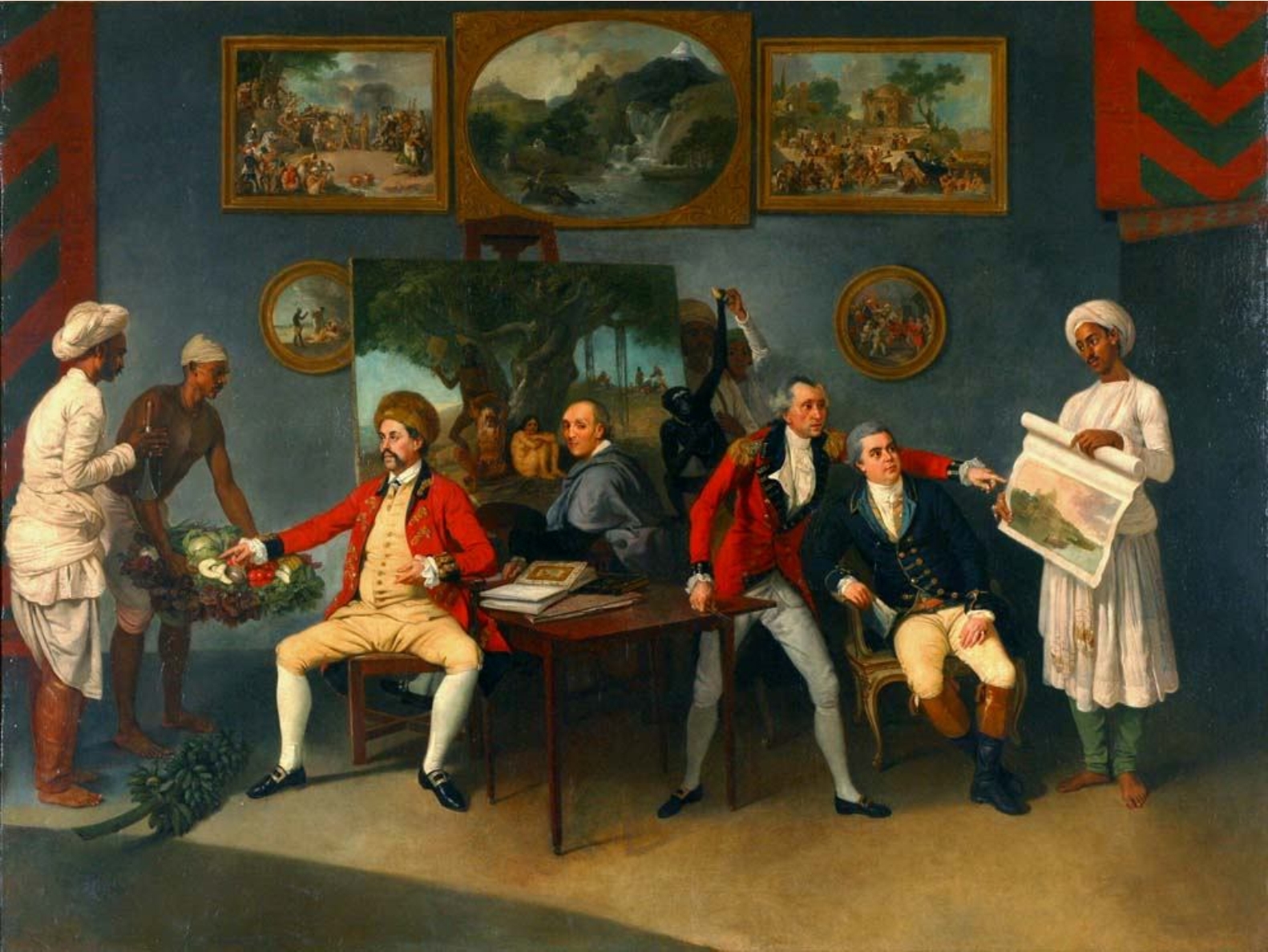
As for the Seiks, that formidable aristocratical republic, I may safely say, it is only so to a weak defenceless state, such as this is. It is properly the snake with many heads. Each zemindar, who, from the Attock to Hansey Ifsar the gates of Delhi, lets his beard grow, cries -wah goro, eats pork, wears an iron bracelet, drinks bang, abominates the smoking of tobacco, and can command from ten followers on horseback to upwards, sets up immediately for a Seik sirdar; and, as far as is in his power, aggrandises himself at the expence of his weaker neighbours; if Hindu or Mussalam much the better; if not, even amongst his own fraternity will he seek to extend his influence and power; only with this difference, in their intestine divisions, from what is seen every where else, that the husband, man and labourer, in their own districts, are perfectly safe and unmolested, let what will happen round about tbyvm.
'From this small sketch it may be easily conceived that the Stiles are much less formidable than they are represented. It is true that they all join together when invaded, as was the case when Abdallah passed through their country. But, notwithstanding they had assembled an immense body of cavalry, extremely well mounted, yet they never presumed to make a single charge on the Duranny army, or even on detachments ; and, considering their irregularity and want of discipline and subordmation, it was well for them, I think, they did not. They satisfied themselves in making a kind of hussar war of it, cutting off stragglers, and intercepting provisions. In this they excel. To say the truth, they are indefatigable; mounted on the best horses that India can afford, each carries a matchlock of a large bore, which they handle dexterously enough, and with which they annoy considerably, avoiding at the same time going in large bodies, or approachmg too near. Such is their way of making war, which can only appear dangerous to the wretched Hindustan troops of these quarters, who tremble as much at the name of a Seik as people used to do, net long ago, at the mention of Mahrattas. But what its more to be admired, those Seik sirdars, whose territories border on the king's, were but lately zemindars of the Jauts, and of their cast or tribe, under which denomination had they remained no one would have thought of them; but, now they have put on the iron bracelet, fifty of them are enough to keep at bay a whole battalion of the king's forces, such as they are. This shews the force of prejudice, and the value of military reputation. Such are the immediate neighbours of the king.
' Five hundred of Nujhaf Khan's horse dare not encounter fifty Seik horsemen ; and yet the last are as despicable a set of creatures as any that can be imagined. On the whole, was it not for Sombre's party, and Letafet's forces, Nujhaf Khan would not be able to stand his ground half an hour; and yet this is the Mighty Chief!'
'From this small sketch it may be easily conceived that the Stiles are much less formidable than they are represented. It is true that they all join together when invaded, as was the case when Abdallah passed through their country. But, notwithstanding they had assembled an immense body of cavalry, extremely well mounted, yet they never presumed to make a single charge on the Duranny army, or even on detachments ; and, considering their irregularity and want of discipline and subordmation, it was well for them, I think, they did not. They satisfied themselves in making a kind of hussar war of it, cutting off stragglers, and intercepting provisions. In this they excel. To say the truth, they are indefatigable; mounted on the best horses that India can afford, each carries a matchlock of a large bore, which they handle dexterously enough, and with which they annoy considerably, avoiding at the same time going in large bodies, or approachmg too near. Such is their way of making war, which can only appear dangerous to the wretched Hindustan troops of these quarters, who tremble as much at the name of a Seik as people used to do, net long ago, at the mention of Mahrattas. But what its more to be admired, those Seik sirdars, whose territories border on the king's, were but lately zemindars of the Jauts, and of their cast or tribe, under which denomination had they remained no one would have thought of them; but, now they have put on the iron bracelet, fifty of them are enough to keep at bay a whole battalion of the king's forces, such as they are. This shews the force of prejudice, and the value of military reputation. Such are the immediate neighbours of the king.
' Five hundred of Nujhaf Khan's horse dare not encounter fifty Seik horsemen ; and yet the last are as despicable a set of creatures as any that can be imagined. On the whole, was it not for Sombre's party, and Letafet's forces, Nujhaf Khan would not be able to stand his ground half an hour; and yet this is the Mighty Chief!'

2 comments:
may I ask what is the source?who is the writer?
Dervinder Singh
An account of the Khalsa by the Frenchman Polier 1776"
Post a Comment